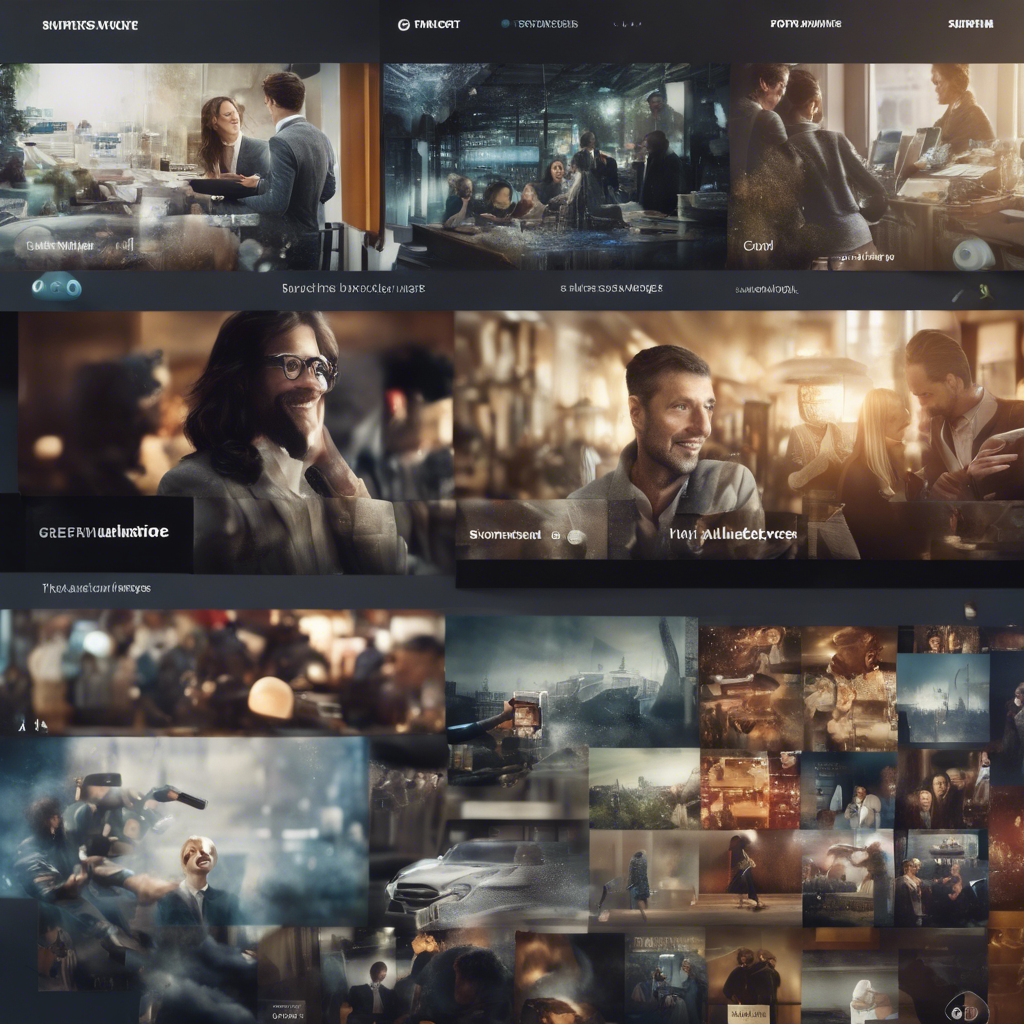
In today's fast-paced digital age, the entertainment landscape has undergone a dramatic transformation with the advent of streaming services. The rise of platforms like Netflix, Hulu, and Amazon Prime Video has not only revolutionized how audiences consume content but has also significantly disrupted traditional media businesses. These streaming services have fundamentally altered the way we engage with entertainment, offering a vast library of content that can be accessed anytime, anywhere, and on multiple devices. One of the key impacts of streaming services is the shift towards a more personalized viewing experience. Unlike traditional television schedules, where viewers had limited control over what they could watch and when, streaming platforms provide a plethora of options tailored to individual preferences. This customization has empowered viewers to curate their own entertainment choices, leading to a more immersive and engaging experience. Furthermore, the rise of original content on streaming services has redefined the entertainment industry. Platforms like Netflix and Amazon Prime Video have invested heavily in producing high-quality original series and movies, attracting top talent and garnering critical acclaim. This shift has not only challenged traditional networks and studios but has also created a new avenue for diverse storytelling and creative expression. Additionally, the global reach of streaming services has enabled content to transcend geographical boundaries, allowing audiences worldwide to access a wide range of shows and movies. This has facilitated cultural exchange and awareness, fostering a more interconnected global community through shared entertainment experiences. In conclusion, the impact of streaming services on the entertainment industry cannot be overstated. From changing how we consume content to reshaping business models and fostering creative innovation, these platforms have ushered in a new era of entertainment that continues to evolve and redefine the way we engage with media.
1. Shift in Consumer Behavior
The convenience and accessibility of streaming services have revolutionized the way people consume media. The ability for viewers to select from a vast array of content at their own convenience has significantly altered consumer behavior patterns. This shift represents a fundamental change in the entertainment industry, empowering individuals to dictate their viewing habits without being tied to rigid broadcast schedules.
By enabling users to watch their favorite shows and movies at any time and from any location, streaming services have effectively dismantled the traditional linear model of media consumption. This freedom of choice has not only reshaped the viewing experience but has also forced traditional media companies to reassess their strategies in order to stay competitive in a rapidly evolving landscape.
The rise of streaming platforms has created a dynamic and diverse marketplace where content creators have the opportunity to reach global audiences instantaneously. This democratization of content distribution has paved the way for independent filmmakers, artists, and storytellers to showcase their work to a broader demographic, challenging the dominance of established media conglomerates.
As consumers continue to gravitate towards the convenience and personalized experience offered by streaming services, the industry is witnessing a paradigm shift in how content is produced, distributed, and consumed. Adapting to these changing dynamics is crucial for traditional media entities to not only survive but thrive in an era where viewer preferences reign supreme.
2. Erosion of Advertisements Revenue
Traditional media outlets have long been accustomed to relying heavily on advertising revenue to sustain their operations. This model worked effectively for many years, allowing these outlets to offer content to audiences at little to no cost in exchange for exposure to advertisements. However, with the rise of streaming services and the shift towards subscription-based models, the landscape of media consumption has undergone a significant transformation.
Streaming services, such as Netflix, Amazon Prime Video, and Disney+, have gained immense popularity by offering viewers ad-free content for a monthly subscription fee. This approach has not only provided audiences with more control over what they watch but has also disrupted the traditional advertising-driven business model of television networks and print publications.
As a result, traditional media businesses are now facing the challenge of adapting to this new reality. With audiences increasingly turning to ad-free streaming services, these outlets have been compelled to rethink their revenue streams. Some have explored new ways to generate income, such as introducing paywalls for online content, partnering with streaming platforms, or creating exclusive subscription-based services.
Despite these challenges, traditional media outlets continue to play a vital role in the media landscape. While the shift towards subscription-based models may have posed a threat to their traditional revenue sources, it has also presented opportunities for innovation and diversification. By embracing change and exploring new avenues for monetization, these outlets can continue to evolve and thrive in the digital age.
3. Competition for Content
The competition for compelling content has reached new heights with streaming giants investing billions in original productions. This push for exclusive and engaging content has intensified the battle between streaming platforms and traditional media businesses for top-tier talent and sought-after intellectual properties. As a result, traditional media companies are under pressure to invest more in content creation to stay competitive.

4. Global Reach and Distribution
Streaming services have a global reach that traditional media businesses once struggled to achieve. The ability to access a vast audience worldwide has enabled streaming platforms to expand their influence and establish a strong presence in markets that were previously inaccessible to traditional media outlets. This broad reach has posed a significant challenge for traditional media businesses, requiring them to re-evaluate their distribution strategies to compete on a global scale.
5. Data-driven Insights and Personalization
Streaming services leverage sophisticated algorithms to collect data on viewer preferences and behavior, allowing them to offer personalized recommendations and tailored content suggestions. This data-driven approach gives streaming platforms a competitive edge in delivering a personalized viewing experience that traditional media businesses find challenging to replicate. As a result, traditional media companies are under pressure to adopt data analytics and personalization strategies to enhance audience engagement.

6. Challenges in Monetization
Monetizing content in the age of streaming services presents a significant challenge for traditional media businesses. While streaming platforms can generate revenue through subscription fees, traditional media outlets face obstacles in transitioning audiences from ad-supported models to subscription-based services. This shift requires traditional media businesses to innovate and explore hybrid models to monetize their content effectively.
7. The Evolution of Content Consumption
The rise of streaming services has not only transformed how content is delivered but also how it is consumed. Binge-watching, on-demand viewing, and mobile streaming have become the new norms, reshaping audience expectations and engagement patterns. This evolution in content consumption has prompted traditional media businesses to revamp their content delivery strategies and adapt to changing viewing habits to stay competitive in a digital landscape dominated by streaming services.
Conclusion
The rise of streaming services has undeniably disrupted traditional media businesses, challenging them to embrace digital innovation, adapt to evolving consumer preferences, and compete in a dynamic and competitive landscape. As the entertainment industry continues to evolve, traditional media businesses must navigate this digital revolution strategically to remain relevant and thrive in a world increasingly dominated by streaming services.

In conclusion, the impact of streaming services on traditional media businesses is profound and multifaceted. The industry's landscape is continually evolving, and traditional media companies must embrace digital transformation, prioritize content innovation, and leverage data-driven insights to stay competitive in a rapidly changing ecosystem.
So, what are your thoughts on this digital revolution in media consumption? Share your views in the comments below!
Commentaires